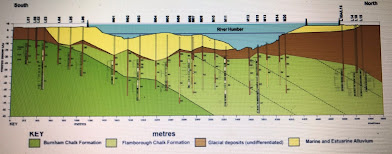It's always a temptation amongst young boys to wander about on industrial and building sites out of normal working hours, throw a few things, take some memento's and perhaps damage stuff. I did it when young and am sure that many others have done it as well.
I am not implying anything more than these generally harmless activities and pranks where the four boys of this story are concerned but they just happened to be in and around the Fish Market on St Andrew's Quay in Kingston Upon Hull when it burnt to the ground in August 1929.
Far from being in the frame for arson the efforts of the boys (plus one other un-named youth) were truly valiant and heroic.
The building, a vast covered area of some 3.85 acres or about the size of two football pitches, had only been completed and open for business for a matter of days. It was seen as a major development to keep Hull as a major fishing port and commercial market with 270 Merchants operating out of small offices around the market floor where, upon the landing by deep sea trawlers of their catches of plaice, soles, halibut,cod, whiting and hake there would be frenetic activity by an army of Clerks, Barrow-Men and Packers.
The boxes of fish, freshly excavated from their iced surroundings in the holds of the trawlers would be sold to the Merchants who with equally frenetic activity on thousands of telephone lines made sure that their customers were catered for and that the awaiting railway carriages could be loaded quickly and efficiently to take the purchases to their destinations nationwide.
Just prior to the outbreak of the devastating fire a flotilla of Trawlers had arrived and were moored pending unloading. The heat and spread of the fire must have been most fierce as 7 steam trawlers suffered major damage to their superstructures with masts, wheelhouses and cabins burned away notwithstanding the loss of valuable deck gear, ropes and lifeboats.
The ships were the Norman, St Alexandra, Lord Deramore, Dairycoates, Frobisher, Ohm and Marconi, the latter pair belonging to the company Ross.
 |
H128 Ohm renamed in 1946 as shown
|
The spread of fire was witnessed by our famous five (plus the other one) who were spurred into action.
At some great personal risk the 3 Harry's and John went on board Frobisher and rescued a cat from the blistering and scorched cabin. They also helped to run out the fire hoses which were connected to a Donkey Engine in the Fish Meal Works. Where boxes were burning on the quayside the boys threw them into the dock.
Watchmen on the trawlers found themselves in a dire predicament and peril from the advancing wall of fire. Some of them hung on ropes over the sides of the ships just above the waterline and at least one of them had to have overnight hospitalisation for exhaustion.
In a separate but no less courageous action ,Dick and the other, un-named youth took a rowing boat and made efforts to rescue the exhausted escapees being able to take several ashore. The LNER Firetug was also in action.
In the light of day the true extent of the disaster was apparent.
As well as the damaged trawlers there had been the loss of 150 railway wagons of an expensive covered and braking type and hundreds of packing boxes, barrels, wheel barrows and weighing scales.
The livelihoods of the merchants had been ruined as many operated out of the premises. Upon arriving to sift through the still smouldering ashes of the building it was evident that business records and amounts of cash had been lost from the effect of the intense heat causing stronghold safes to burst open and spill their contents. It was reported that only one safe remained locked in the whole building and some £200 was undamaged.
A site worth witnessing will have been the hordes of rats running about having been driven out of their nesting places by the fire.
A saving grace was that the large catches of Icelandic and Faroes fish in the ice packed holds of the stricken trawlers had not been affected by the fire or smoke and Food Inspectors deemed them to be in excellent and saleable condition.
However, the implications of the fire were hugely serious for Hull not just in the thousands of pounds of lost trade but with competing Ports in Grimsby and Fleetwood benefiting and taking the advantage until normal service could be resumed.
Nationally a shortage of fresh fish drove up the prices in that year.
The unemployment and business interruption figures were not known but hundreds depended upon the Fish Market for their incomes.
I have not been able to find out any further news about the brave youths- the three Harry's- Young, Duffield and Hepton, John Harper, Dick Campbell and the other. No doubt they may still have descendants in the local area some 91 years after that memorable event.
There is good footage of the aftermath of the fire on the Pathe News Website-
https://www.britishpathe.com/video/250-000-fire-disaster/query/St+Andrews+Dock




















